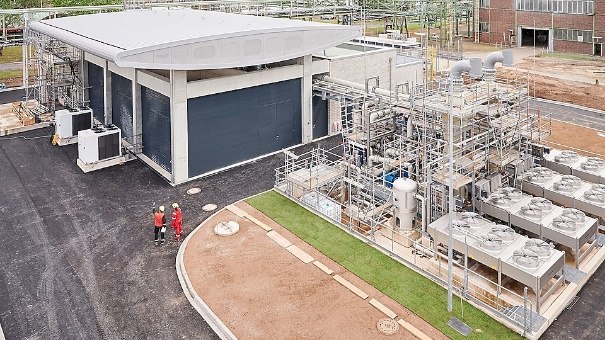Shell sees great potential for the use of hydrogen in a range of sectors, from transport to industry. As governments, businesses and energy consumers continue to align on the need for net-zero emissions in the future, support for hydrogen is gathering pace.
The rectifiers convert the AC Alternate Current to DC Direct Current. This direct current is required for the electrolysis process, in which the hydrogen at the negative pole (cathode) and the oxygen at the positive pole (anode) are then produced
Shell has started up Europe’s largest hydrogen electrolyser of its kind at our energy and chemicals park Rheinland, in Germany.
As part of the Refhyne consortium and with funding from the European Commission, the 10 megawatt PEM electrolyser uses renewable energy to initially produce up to 1,300 tonnes of green hydrogen a year.
The green hydrogen will initially be used to produce fuels with lower carbon-intensity at the refinery and Shell are also working to enable the green hydrogen to help decarbonise other sectors such as road transport.
The fully operational plant is the first to use this technology at such a large scale in a refinery and plans are already under way to expand the capacity of the electrolyser from 10 megawatts to 100 megawatts.
In our Powering Progress Strategy, Shell set a target to become a net-zero-emissions energy business by 2050, in step with society. As part of our plan we will transform five core refineries into integrated Energy and Chemicals Parks by 2030.
Transforming these refineries will mean using more recycled and renewables feedstocks, such as hydrogen and waste oils and processing less crude oil. As a result, by 2030 Shell will reduce production of traditional fuels by 55% and will produce more of the low-carbon fuels, chemicals and energy products that our customers need.

